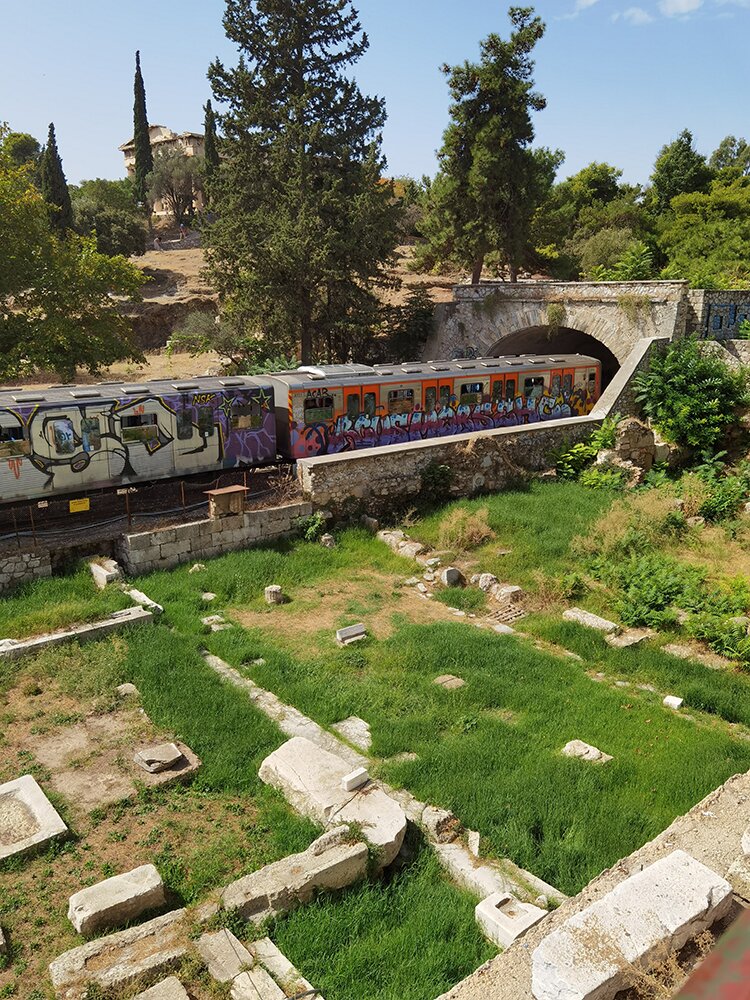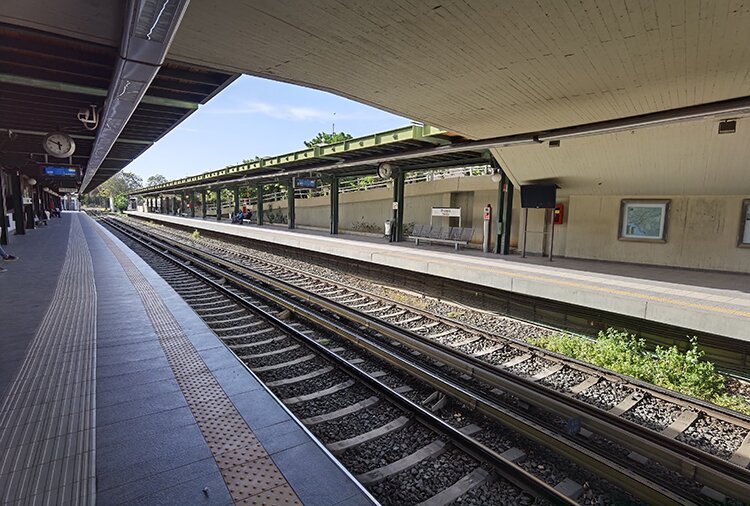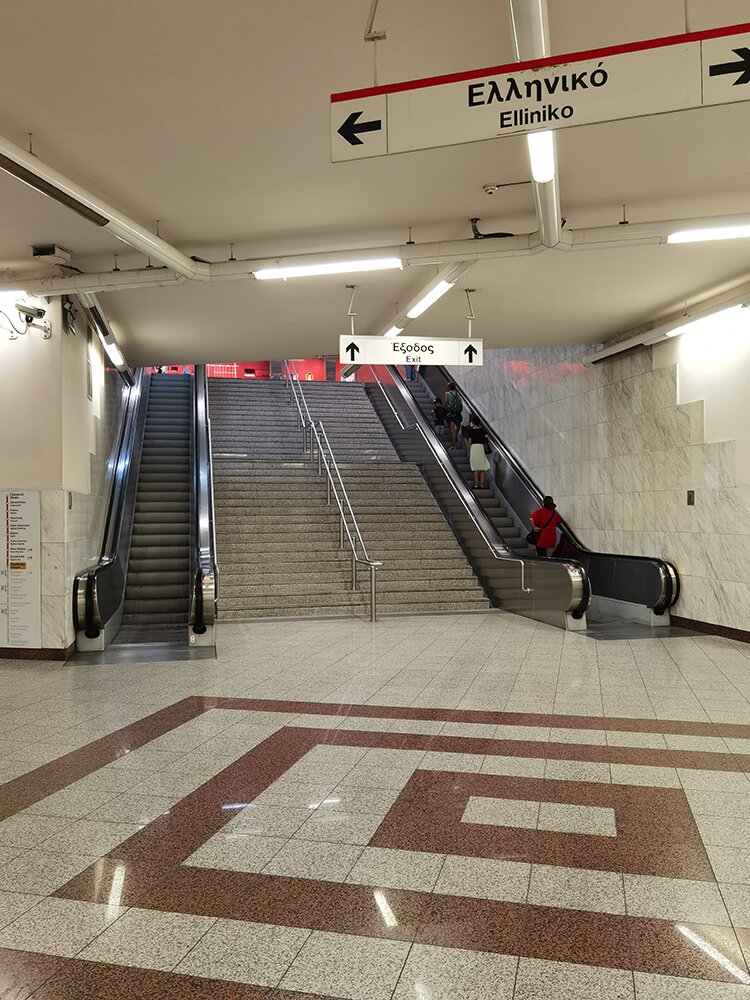How to get around Athens historical center - Map

The archaeological sites and the picturesque districts of Athens are concentrated in the historic center, getting around is easy since 2004 thanks to the Metro and the pedestrian streets that join the stations. You will not need to use a taxi or a bus, only the Metro and your feet.
It is important to know the Metro stations that are close to the sightseeings and the main streets that you will walk in order to arrange your itinerary and stops to eat and have a coffee. Everything is fortunately within walking distance of each other.
At the end of the article there is a map with the Metro stations and the streets that connect them.
For the Acropolis and the Acropolis Museum
The access to the city's most popular sightseeing is easy thanks to the "Acropolis" Metro station. The station is located right next to the Acropolis Museum. The Acropolis with the Conservatory of Herodes Atticus is a few meters away on foot. The main pedestrian street is Dionysiou Areopagitou which is the most picturesque street in Athens, surrounded by greenery, it surrounds the hill of the Acropolis, while also passing by the hills of Filopappos, Areios Pagos and Pnyka. The street has no shade and therefore it is not recommended to cross it during summer midday hours. It ends at "Thissio" Metro station and at Monastiraki.

Exiting the "Acropolis" station you see the sign for the Museum
The hill of Areios Pagos was an ancient court where, according to mythology the god Ares was tried. On the hill of Filopappos you will find the prisons of Socrates, the Cimonian sepulchers and the monument of Philopappos. In Pnyka was the place where the municipal assembly was held, there you will have the opportunity to admire up close the orator's podium, a place where great orators of Ancient Athens spoke. Note that the hills have several uphills.
From the "Acropolis" station there are other options too. Follow Makriyianni street (the pedestrian street of the station) and enter the district of Plaka. The first sightseeing you come across within just a few meters is the Lysikrates Monument, a choragic monument of classical Athens which has remained intact over the centuries. More information about Plaka is given below.
Another option you have from the "Acropolis" station is the Hadrian's Gate and the Temple of Olympian Zeus, also known as the Columns of Olympian Zeus opposite Amalias Avenue.
Be careful during your tour both in the Metro and in the historical center there are pickpockets. The purses must be held strictly in front of the chest and grasped by your hand.
For the Parliament - National Garden - Columns of Olympian Zeus - Zappeion - Panathenaic Stadium
Another important station is "Syntagma". The exit is in Syntagma Square (Constitution Square) directly opposite the Parliament and the Monument of the Unknown Soldier with the tsolias guarding it. The impressive changing of the guard takes place every hour, while the official change takes place every Sunday at 11:00 am. Next to the Parliament, on Amalias Avenue, is the National Garden, Zappeion with its gardens, the columns of Olympian Zeus and the Panathenaic Stadium where the first modern Olympiad was held in 1896. The route is easy to walk due to the greenery of the gardens.

Syntagma Square. In the background between the buildings is Ermou Street
From Syntagma begins Ermou street known for its clothing shops. Going down Ermou you end up at Monastiraki square and at "Monastiraki" station, with a leisurely walk the route is 10 minutes. In the middle of the distance you will come across the small Byzantine church of the 11th century Panagia Kapnikarea. The next street is intersects Ermou is Aiolou Street which goes up towards the Acropolis and reaches the Agora Square with several eateries and cafes. There you have also entered the districts of Monastiraki and Plaka where you can continue your route.
On Mitropoleos Street is the Metropolis with the statue of Constantinos Palaiologos. At the station you will have also the opportunity to see the excavations of the Metro and the findings that came to light.
For Monastiraki - Ancient Agora - Plaka - Psirri
The station "Monastiraki" gets you to the heart of the historical center. In just a few meters you reach Ancient Agora, Monastiraki, Plaka and Psirri, the most touristic spots of Athens after the Acropolis. The scene turns multicultural and bustling, which shows that you have entered a different Athens.

On the square is the 10th century Church of the Assumption of Mary which once belonged to a monastery, hence the name Monastiraki.
The next sightseeing you come across in the square is the islamic mosque while next to it is the Hadrian's library. Stroll the narrow streets of Monastiraki, the best spot is Adrianou Street which overlooks the Acropolis and the Ancient Agora with many cafes and restaurants. Other sightseeings in Monastiraki are the Roman Agora, the Gate of Athena Archegetis, Aerides, Fetije Mosque and the Gate of the Madrasah. It goes without saying that the more you stroll the alleyways the more you will discover. Every Sunday morning in Monastiraki there is a big bazaar.
The entrance to the Ancient Agora (you pay a ticket) is located at Hadrianou Street with the Stoa of Attalos, the Hephaestus Temple and the Agrippa Conservatory standing out.

It is a good idea to cross the Ancient Agora with the electric train. It is the section "Monastiraki" - "Thissio". The trains are slow and you will be able to see the finds. In the background of the photo is the Temple of Hephaestus.
Picturesque Plaka is located behind Hadrian's library. It is characterized by pedestrian streets with many souvenir shops as well as cafes and taverns. My favorite spot, not only for me of course but also for many others, is Dioskouri cafe - mezedopoleio overlooking the Ancient Agora. Sights in Plaka are the Holy Church of Agios Nikolaos Raghava and the Lysikrates Monument. Of course Plaka is also worth visiting at night.
If you feel like walking you can visit Anafiotika a district built in the middle of the 19th century by builders from Anafi island according to Cycladic architecture. If you walk the entire Plaka you end up at the "Acropolis" station and the Acropolis Museum.
If you want to visit the picturesque district of Psirri it is best at night because the area is famous for its nightlife. There is also the thousand - photographed Little Cook.
At "Monastiraki" station the archaeological excavation is exposed to the public.

Monastiraki station
For Thissio
The station "Thissio" is located in the homonymous picturesque district below the Acropolis. Here you will find cafes and eateries with splendid view of the Acropolis. I should note that at night the illuminated Acropolis becomes even more impressive and romantic. The ancient cemetery of Kerameikos with its Archaeological Museum is a stone's throw away from "Thissio". There you will have the opportunity to admire tombstones and grave markers.

Thissio station
For the Propylaia
The "Panepistimio" station brings you to the Propylaia of the University of Athens, the Academy of Athens and the building that used to house the National Library. You will see the much-photographed statues of Apollo and Athena on the columns as well as statues of Socrates and Plato. It is worth noting that at the station there is an archaeological collection with findings brought to light by the excavation of the Metro.
For the National Archaeological Museum
Outside the historical center but definitely worth visiting is the National Archaeological Museum, the most important museum in Greece. The nearest station is "Omonia" and it is a 5 minute walk.
Information about the Metro
In Athens city center all three Metro lines meet, so the changes at the stations need attention, especially from those who are not familiar.
| "Acropoli" station belongs to the red line 2 |
| "Syntagma" station belongs to the red line 2 and the blue line 3 |
| "Monastiraki" station belongs to the green line 1 and the blue line 3 |
| "Thissio" station belongs to the green line 1 |
| "Panepistimio" station belongs to the red line 2 |
| "Omonia" station belongs to the green line 1 and the red line 2 |
Pay attention every time to which line your destination station belongs and towards which direction you should head.
| If you want to go from "Syntagma" to "Acropolis" go to the platforms with the red color in the direction "Elliniko" |
| From "Monastiraki" to "Syntagma" on the blue colored platforms in the direction "Airport" |
| From "Thissio" to "Syntagma" get off at "Monastiraki" go to the blue platforms in the direction "Airport" |
| From "Omonia" to "Monastiraki" on the green-colored platforms towards the direction "Dimotiko Theatro" |
| From "Omonoia" to "Panepistimio", "Syntagma", "Acropolis" on the red-colored platforms in the direction "Elliniko" |

The sign in red color above indicates the platforms of the red line 2 here in the direction to "Elliniko" station
Ticket prices are:
| 90-minute | 1.20 |
| Daily | 4.10 |
| 3-day | 20.00 |
It's good to have change with you so as to be served by the vending machines.
Summary - map
Finally let me remind you which pedestrian streets connect the Metro stations:
| Syntagma - Monastiraki: | Ermou |
| Monastiraki - Thissio: | Adrianou |
| Thissio - Acropolis: | Dionysiou Areopagitou |
| Acropolis - Syntagma: | Amalias Avenue (not a pedestrian street) |
Below is the map I created with the Metro stations and the streets that connect them. The points of interest are listed as labels from Google Maps. Good routes!